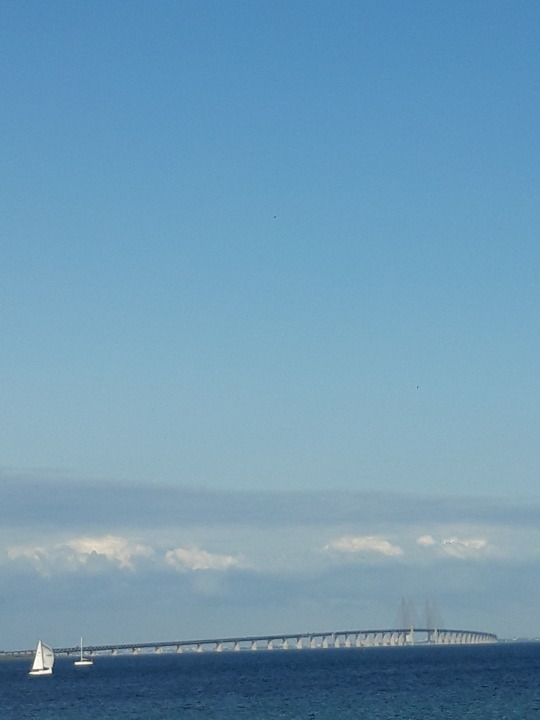#oresund
Text
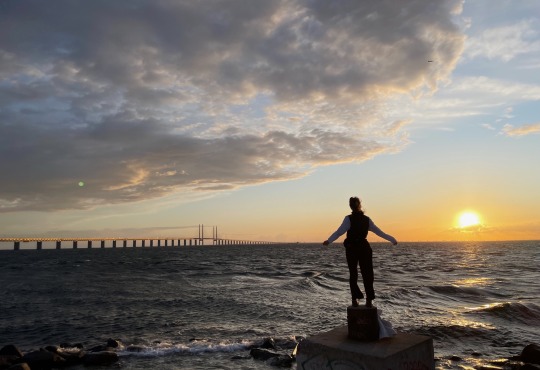

Øresundsbron
5 notes
·
View notes
Text
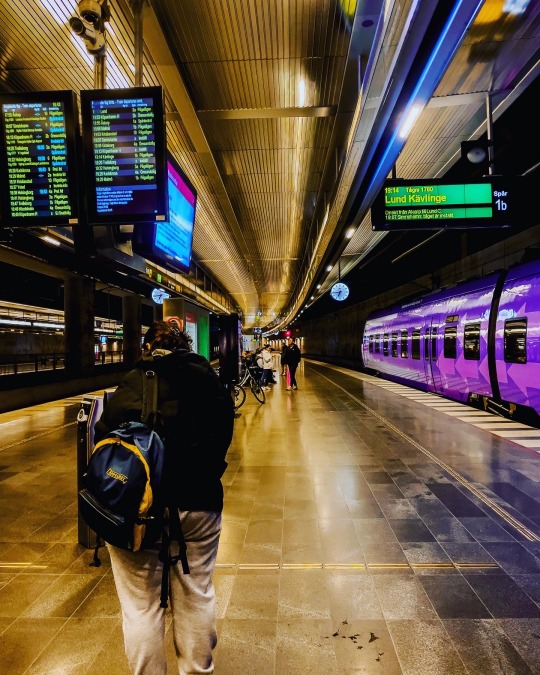
Malmö’s trainstation.
5 notes
·
View notes
Text
Öresundsbron Sunset 01
Öresundsbron Sunset 01, Malmö, Sweden, 2012 www.mabrycampbell.com #photography #seascape #sweden #mabrycampbell #image #photo #potd
Öresundsbron Sunset 01 – Mabry Campbell
©️ 2012 Mabry Campbell
www.mabrycampbell.com
Fine art prints available through Catherine Couturier Gallery in Houston, Texas.
Catherine Couturier Gallery
2635 Colquitt Street Houston, TX 77098
Tel: (713) 524-5070
Email: [email protected]
Öresundsbron Sunset 01
Öresundsbron Sunset 03
Surfside Sunrise 04
Sunset Love Locks
Kissing Camels
View On WordPress
1 note
·
View note
Text

Bitta, Christian, and their parents in Sims 4
3 notes
·
View notes
Text
..:: What Else Is There? Weekly :: 2024.01.04 ::..
// A. G. Cook bakes up a striking ten minute hyperpop incantation full of angelic chirps and glitched peaks on Silver Thread Golden Needle.
// Freezepop take their time to layer soft synths with burbling bass to shine some light on one of their admirers on The Stroke Of Midnight.
// Bayonne composes a tender and relaxing vignette where he uses his alone time to seek out some new inspiration on Blank Cloud.
// Alice Merton gathers her courage and wields some driving pop rock to cast off her self-doubt and embark on a new journey on Run Away Girl.
// Øresund Space Collective buckle down and lead us on a thirteen minute psychedelic expedition full of cosmic encounters on Snake Fucker (Borelo).
Spotify Playlist
YouTube Music Playlist
#A.G. Cook#Freezepop#Bayonne#Alice Merton#Oresund Space Collective#music#new music#2024#2024.01.04#playlist#What Else Is There? Weekly#bubblegum bass#hyperpop#synthpop#electropop#indietronica#indie pop#pop rock#space rock#psychedelic rock#Spotify
0 notes
Text


Lady Loki (2022)
In late 2019/early 2020 I came across this Orseund Iris blouse and was immediately bewitched. It was entirely out of my price range and would not be appropriate for any event I was attending as a junior in high school; but I could not stop thinking about it. Years went by, Orseund Iris even discontinued the blouse, but I still kept thinking about it.
Eventually, I realized I had been pining after this blouse for so long that I had acquired the skills to make it myself. No corners were cut in the production of this blouse, every detail was sewn with care and precision. I even went ahead and made a pair of trousers and horns to put together a halloween costume.
My life remains, as it was at age 16, lacking in glamorous yet casual occasions for which this blouse would be appropriate. Nevertheless, when the blouse does make an appearance, she's a stunner. And even hanging in my closet, she's one of my most prized possessions.
#green#blouse#oresund iris#green green blouse#20 buttons and a strap#what a pleasure to unwrap#haha#but really there are 24 buttons on this blouse she is a project to put on and take off for that reason alone
0 notes
Text
going to the ateez cupsleeve event on sunday in copenhagen, hope to literally see no one there and get my shit and get in and out as fast as possible 😊
0 notes
Text
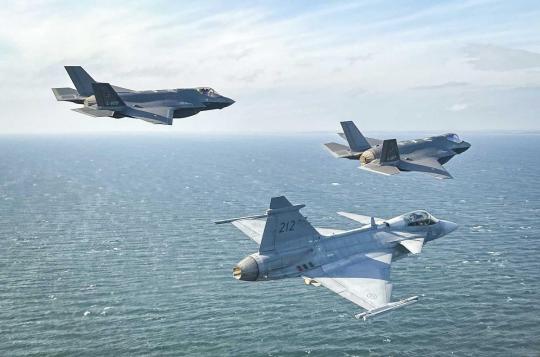
IMAGES: Swedish and F-35 Danish Gripen perform first inter-ally exercises of 5ª generation
Fernando Valduga By Fernando Valduga 15/03/2024 - 18:16in Military
For the first time as NATO Allies, Danish F-35 fighters and Swedish JAS39 Gripen fighters flew air combat training exercises in Danish airspace on March 11 and 13.
The training missions showed close military cooperation between the Danish and Swedish air forces and also demonstrated efforts to integrate and interact with different generations of fighters in the Nordic countries. The exercises were mainly conducted in separate training areas on the waters of Kattegat. They consisted of one-on-one fighter maneuvers and coordinated flight of Danish F-35s from the Skrydstrup Fighter Wing and two JAS39 Gripen from 'Blekinge Flygflottilj' in Ronneby, near Karlskrona, in southern Sweden.

Cooperation is based on a mutual interest of the two nations through the Oresund, making use of experience and skills to strengthen the combined power of air warfare.
"Because we are neighbors and close allies, using each other's capabilities not only provides great training value for pilots and personnel, but is also visible proof of the ambition to be able to operate effectively together," says Major General of the Danish Air Force, Jan Dam.
The training exercises involving the JAS39 produced by Sweden and the F-35 produced by the United States highlight the need to ensure that existing and new combat aircraft fleets are able to cooperate and interact on the modern battlefield.
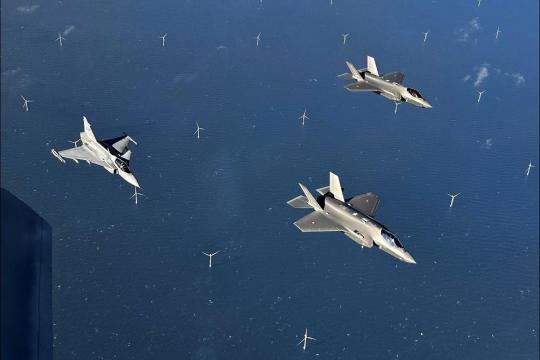
"The Gripen and F-35 belong to two different generations of combat aircraft and therefore have different characteristics to contribute to the battlefield. As a fifth-generation combat aircraft, the F-35 has the special ability to collect and process huge amounts of data, which it can later share with other allies and actors," explains Lieutenant-Colonel Casper Borge Nielsen, head of the Combat Flight Department of the Allied Air Command.
He went on to say that the integration between the F-35 and the Gripen increases the combined operational capabilities, because the F-35 is able to generate and share an unprecedented situational image, from which the Gripen can also benefit. On the other hand, the Gripen represents an advanced combat aircraft that brings more firepower to combat. This will benefit both fifth and fourth generation combat aircraft and, in a broader perspective, will give land and naval forces the opportunity to operate with more freedom and efficiency.

"Performing this type of exercise flying with another type of aircraft provides different challenges and experiences than when it is normally practiced against our own units," said Lieutenant-Colonel Erik Almquist, Commander of the 172º Swedish Air Force Fighter Squadron. “Cooperation with Danish pilots has been very easy and uncomplicated. The biggest challenge was to decide whether we should speak English or Danish/Swedish on the phone during the briefing and debriefing,” he said, adding that on the air, radio communications are made, of course, in English. "This week's exercises were the beginning of an increased cooperation where the proximity of the divisions in Skrydstrup and the simplicity of the cooperation provide good conditions for us to develop and strengthen our ability to fight together as a 'Nordic Air Force'," he concluded.
"We found our Swedish colleagues in Danish airspace to fly Basic Fighter Maneuvers (BFM), also known as 1-on-1 air combat training," says TRI, one of the Danish F-35 pilots of the Skrydstrup Fighter Wing in southern Jutland. He added that this creates different requirements and challenges when training against an unknown opponent. "Most of the time, we fly BFM against our own F-35 pilots. The Gripen and the Swedish pilots fly differently, so a 1-on-1 match against them is a professional challenge. We can test elements of our own tactics that we don't normally do. It's amazing! And of course it's great to meet the Swedes in Denmark," concluded TRI.

In the fall of 2023, Denmark received the first four F-35 fighters on Danish soil, while six aircraft are still located in the US for training flights. In total, Denmark has invested in 27 F-35 fighters, of which the remaining 17 are expected to be delivered in the coming years.
Tags: Military AviationF-35 Lightning IIFlygvapnet - Swedish Air ForceJAS39 GripenNATO - North Atlantic Treaty Organization
Sharing
tweet
Fernando Valduga
Fernando Valduga
Aviation photographer and pilot since 1992, he has participated in several events and air operations, such as Cruzex, AirVenture, Dayton Airshow and FIDAE. He has works published in specialized aviation magazines in Brazil and abroad. He uses Canon equipment during his photographic work in the world of aviation.
Related news
HELICOPTERS
Indian government signs contract with HAL to buy 34 Dhruv light helicopters
15/03/2024 - 16:00
MILITARY
Shield AI will integrate Artificial Intelligence pilot in the Kratos BQM-177A drone.
15/03/2024 - 14:00
AIR SHOWS
It's less than a month before FIDAE 2024 opens its doors to the world
15/03/2024 - 13:00
MILITARY
Canadian Air Force received its first CE-145C Vigilance
15/03/2024 - 11:30
BRAZIL
Brazilian Air Force starts study to activate a second squadron of F-39 Gripen fighters: the "Pacau"
14/03/2024 - 21:30
EMBRAER
Embraer and ST Engineering sign agreement on the C-390 aircraft in the Asia-Pacific region and South America
14/03/2024 - 19:59
40 notes
·
View notes
Text

Johan Christian Dahl, View over Oresund near the Lime Works, 1818. Oil on canvas
20 notes
·
View notes
Text
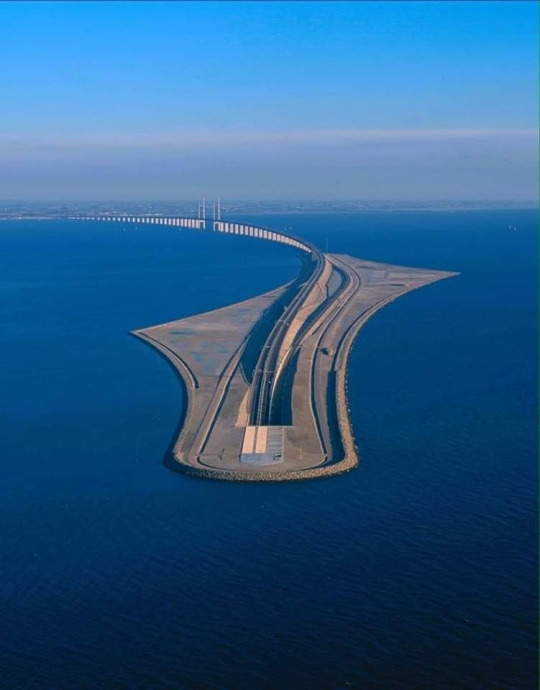
Civil Engineering Discoveries · Follow
·
Oresund Bridge Between Sweden and Denmark is, Longest Bridge and tunnel in Europe !!
The bridge that comes from Sweden turns into a tunnel under the sea and reappears in Denmark; both countries are united by this beautiful work of Engineering.
19 notes
·
View notes
Text

Oresund Bridge as seen from Malmö, Sweden, 16 September 2023
10 notes
·
View notes
Text
Öresundsbron Sunset 03
Öresundsbron Sunset 03, Malmö, Sweden, 2012 www.mabrycampbell.com #photography #sweden #seascape #mabrycampbell #potd
Öresundsbron Sunset 03 – Mabry Campbell
©️ 2012 Mabry Campbell
www.mabrycampbell.com
Fine art prints available through Catherine Couturier Gallery in Houston, Texas.
Catherine Couturier Gallery
2635 Colquitt Street Houston, TX 77098
Tel: (713) 524-5070
Email: [email protected]
Öresundsbron Sunset 03
Surfside Sunrise 04
Sunset Love Locks
Kissing Camels
Flying At Sunrise
View On WordPress
1 note
·
View note
Text
It was only a matter of time before Russia’s fast-growing shadow fleet, a group of vessels whose owners do their utmost to conceal their identity while carrying oil to evade sanctions on Moscow, started becoming a serious maritime risk. Russian vessels are now regularly turning down pilotage in Danish waters, the Financial Times reports—a practice that not only breaches maritime etiquette but could also lead to a disastrous accident.
The collision involving a container ship and Baltimore’s Francis Scott Key Bridge in the United States on March 26 demonstrates the dangers involved when bulky ships vessels through difficult waters. Indeed, the Dali struck the bridge despite being steered by two pilots. Even if just a small share of vessels turn down pilotage, similar disasters risk becoming commonplace.
International maritime rules strongly recommend the use of pilots with specialized local knowledge for most vessels sailing through Denmark’s Great Belt, the narrow passage between the country’s largest islands. The Great Belt is not just narrow—it also has treacherous waters and is extremely busy: Every year, some 70,000 vessels pass through the Great Belt and the nearby Sound (Oresund), which sits between the shores of Denmark and Sweden. It’s standard practice to follow international maritime recommendations and take on an experienced local pilot when it comes to difficult navigation routes, whether that’s the Great Belt or the Suez Canal.
The Geography of the Danish Straits

For the sake of maritime order and safety, Copenhagen could block ships that refuse pilotage. That, though, might trigger a standoff with Russia—if Moscow admits its role as a patron of the shadow fleet. Indeed, blocking these rule-breaking vessels would itself violate international maritime rules. Before forcing such a choice, however, the open-source intelligence community could help by revealing the identities and whereabouts of shadow vessels’ owners.
Since the beginning of this year, at least 20 tankers that are suspected to be shadow vessels transporting Russian oil have refused to take Danish pilots on board, according to internal reports leaked to the Financial Times and the Danish research group Danwatch.
That’s at least 20 tankers that have sailed through the Baltic Sea—in most cases via the Gulf of Finland, passing through the exclusive economic zones of Finland, Estonia, Latvia, Lithuania, Sweden, and Germany—into Danish waters and the Great Belt, from which they have traveled on to Kattegat (comprising Danish and Swedish waters) and Skagerrak (Danish and Norwegian waters) and into the North Sea and the oceans that will bring them to their buyers in countries such as India and China.
Shadow vessels are clapped-out ships that spend their last remaining years providing transportation to and from sanctioned countries that official vessels and their owners won’t touch. The risk that these and other dark vessels pose to coastal states is further increased by the fact that they sail under the flags of countries unlikely to come to anyone’s aid if they cause accidents or incidents (Gabon is a particular favorite) and don’t undergo regular maintenance. Any accident—be it a collision or an oil leak—is likely to be doubly disastrous as a result.
Add to that the fact that their owners are hard to track down—and that they lack proper insurance. If a shadow vessel were to sustain a massive oil spill in, say, Finnish waters, Finnish authorities and taxpayers would end up on the hook. And shadow vessels are more likely than law-abiding ones to be involved in accidents since they frequently turn off their AIS (automatic identification system), a GPS-like navigation tool that allows vessels to see one another.
Since the start of Russia’s full-scale invasion of Ukraine, Russia’s attempts—often successful—to avoid sanctions have caused the shadow fleet to balloon; it’s currently thought to encompass some 1,400 vessels, though like all illicit activities, it’s impossible to measure precisely. (My report about the shadow fleet from last December provides an in-depth examination of the ships and the threats posed by them.)
If oil spills do occur, the International Maritime Organization’s (IMO) International Oil Pollution Compensation Funds assist the countries affected. But if oil and other toxic spills increase substantially, as they’re likely to do as a result of the shadow fleet, the fund won’t have enough money to compensate everyone.
So should Denmark simply block shadow vessels refusing pilotage, or all shadow vessels for that matter?
Not so fast. Yes, shadow vessels violate international maritime rules and conventions—but the United Nations Convention on the Law of the Sea (UNCLOS) gives all vessels the right of so-called innocent passage, meaning the right to sail through other countries’ territorial waters and exclusive economic zones. The fact that shadow vessels violate maritime rules doesn’t give coastal states the right to violate the rules in turn.
And, noted retired Rear Adm. Nils Wang—a former chief of the Danish Navy, which also covers a range of coast guard tasks—“according to international law, the Danish Straits are international straits and are not under Danish jurisdiction. For this reason, too, Denmark doesn’t have the legal right to force ships to use pilots.”
Though most ships follow the IMO’s recommendations and use pilotage, for which they pay a fee, over the years there have been some cheapskates that turned down pilotage. In some cases, those ships caused oil spills. “Every time there’s a leak from a vessel that didn’t use pilotage, there’s an outcry to ban offenders, but we can’t,” Wang said.
Then, in the mid-2010s, the number of cheapskates traveling without pilotage grew.
Danish authorities got creative and announced that if ships with drafts (the amount that the extends beneath the waterline) of more than 11 meters (about 36 feet) didn’t request pilotage, then the Danish authorities would call them on VHF, the radio used by sailors, and remind them that they weren’t following international recommendations, and that Denmark would report them to their flag state and the IMO.
What’s more, a call on VHF allows every vessel in the vicinity to hear the conversation. “And then we started doing it,” Wang said. “And it changed behavior, because it was embarrassing for the ships and the captains to be called out like this. But if you’re part of the dark fleet, you don’t give a damn. Calling these vessels out won’t make a difference.”
Coastal states do have the right to block access in their territorial waters in certain cases—such as if transiting vessels are in poor repair or lack proper insurance. But when nations agreed and signed UNCLOS in 1982, a situation in which a country systematically evades globalization-based economic sanctions by using a fleet of dark vessels was inconceivable.
In response to the emergency of the shadow fleet, the world’s UNCLOS signatories could convene to make pilotage in sensitive waters mandatory. But such negotiations would take a long time, and under the current geopolitical conditions may never reach a conclusion. And because the Danish Straits are international waters, Denmark can’t impose new rules on its own.
This is globalization in a fiercely geopolitical era: Russia can invade Ukraine and evade the resulting sanctions by means of a fleet that sails through law-abiding countries’ waters—and their governments can’t stop it. On the contrary, with Russia now having joined Iran, Venezuela, and North Korea in using a shadow fleet, more countries will conclude that misbehaving and incurring economic sanctions is no big deal. And trade using dark vessels is cheaper than using legally operating ones.
An even larger shadow fleet would, of course, increase the risks both for marine wildlife and regular shipping. If a Russian shadow vessel collides in the Danish Straits with a legal merchant vessel, or even a Danish Navy vessel, what would Denmark do? What would NATO do?
But for now, there’s one group of dark-fleet operators that can be targeted completely legally and without risk of geopolitical escalation: the shadow vessels’ owners. They are plentiful and hide behind post office box addresses in countries such as the United Arab Emirates—because they don’t want to emerge from the shadows.
On the good side in this standoff, though, we have a large and growing community of open-source investigators, both professionals and amateurs. These investigators should take on a good deed for the global maritime order and investigate shadow-vessel owners, then share their identity and activities. Some may be hardened criminals immune to the embarrassment of public scrutiny, but many others may simply be ordinary businesspeople who have spotted an opportunity.
Just as with the ships once called out on Danish radio, public shame may be one way to force people to act for the better.
6 notes
·
View notes
